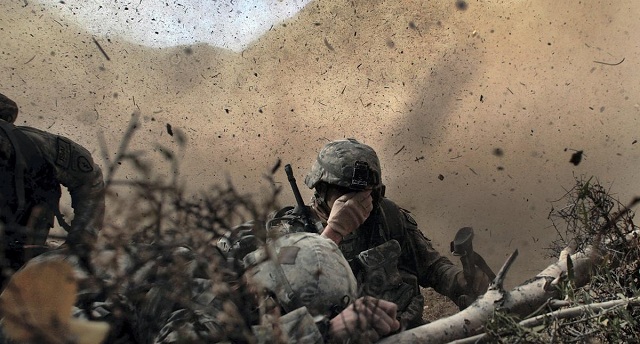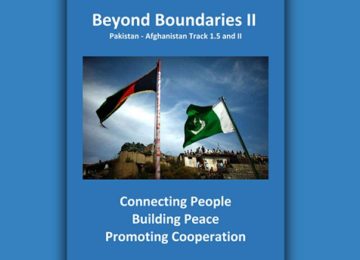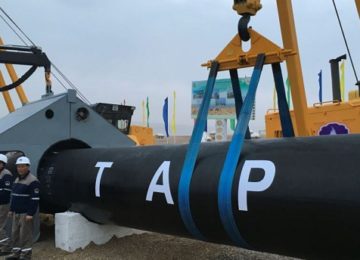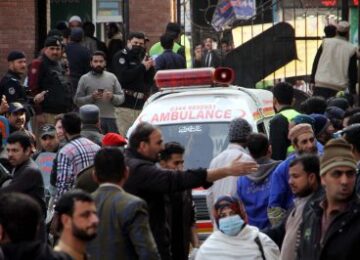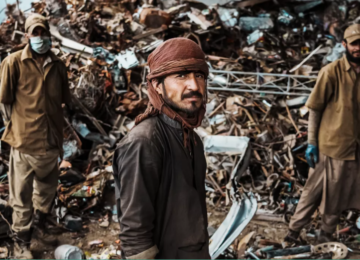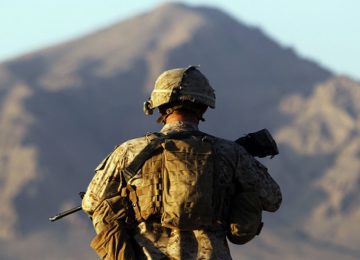What went wrong in Afghanistan, that despite tremendous human and technological resources, it became an embarrassment for the US and a source of tension for the region?
On October 7, 2001, the US attacked Afghanistan ostensibly to punish Osama Bin Laden and his harbours, the Taliban regime. Within less than a month the Taliban regime was decimated; majority of the Taliban foot soldiers melted into the populace while the leadership went underground or took shelter in Pakistan.
After 17 years of shock and awe the blitzkrieg Taliban are still a reality; while the US has incurred heavy human and material losses. So far, more than 2500 American soldiers have died in action and many thousands injured; approximately, 80,000 Afghan civilians have been killed during this period. Losses suffered by other coalition partners are equally depressing. During this period, the US spent approximately $900 billion, which American analysts now describe as a sheer waste of blood and treasure.
When the US led NATO alliance triumphed, it was presumed that a new beginning would dawn upon Afghanistan, where the anarchy of the past decade would be consigned to history. Political process introduced in the country, had its roots in protracted dialogue, conducted in Bonn, under the viceregal supervision of the US. This tilted its weight in favour of Mr. Hamid Karzai as an interim president of Afghanistan. In retrospect, Karzai was already earmarked for the job when he led freedom fightersin Kandahar on a motorbike to dislodge the Taliban. It would be a separate but interesting study, to dilate upon the choice of Karzai as future president of Afghanistan who, to quote President Ashraf Ghani, “never ran a two-men office”.
The aftermath of Taliban’s fall led to many developments which had implications in the subsequent years on Afghanistan. It also became the casus belli for the US’ prolonged engagement in the country, which American commentators now refer to as, America’s longest war in history. What went wrong in Afghanistan, that despite tremendous human and technological resources, it became an embarrassment for the US and a source of tension for the region? A host of events or factors contributing to the deterioration of Afghan situation are noteworthy:
First, for the United States, the situation in Afghanistan remained favourable till early 2004, as the Taliban were in hibernation. The US ignored Talibani gestures for reconciliation. However, after the US invasion of Iraq in March 2003, which diverted the US attention from Afghanistan, the Taliban grabbed the opportunity and started consolidating their position.
Second, Karzai and Ashraf Ghani failed to provide good governance; inefficiency, nepotism and corruption have been the hallmark of their governments. Afghan security forces lacked motivation while desertion rate amongst soldiers was alarmingly high according to international standards. The US shirked taking steps to curb warlords who consolidated their position in the government and around the country.
The use of brute force and ignoring tribal sensitivities, especially barging into Afghan homes, created deep aversion against the US which was capitalised by the Taliban
Third, the narcotics business flourished in the country to the extent that Afghanistan attained the dubious distinction of being the largest opium (90 percent) producer in the world. Narcotic money turned out to be a major source of wealth, power and war economy in Afghanistan, a fact acknowledged by the US watchdog, Special Inspector General for Afghanistan Reconstruction (SIGAR). Drug money has created a vested interest that favours war as peace and stability would be detrimental to the narco-business.
Fourth, despite the overthrow of Taliban, Afghanistan continued to be a testing ground for competing influences. Iran, India and Russia supported their proxies. Pakistan has been more skeptical of the Indian role and the ruling Afghan elite’s pro-India tilt. The US and Afghan governments ignored Pakistan’s reservations over the Indian role in Afghanistan which left no room for Pakistan but to maintain the strategic balance through the Taliban. Now Russia and Iran are in contact with the Taliban, a significant development from the regional perspective.
Fifth, the US-led NATO alliance faced a peculiar problem. Except for the US, UK, Canada and Australia, the other coalition partners in the Operation Enduring Freedom flagged strong caveats regarding their military engagements with the Taliban. Mostly, the caveat-nations were performing guard duties, protecting NATO centres or performed supportive role.
Sixth and most importantly, the use of brute force and ignoring tribal sensitivities, especially barging into Afghan homes, created deep aversion against the US which was capitalised by the Taliban. Consequently, Taliban now hold sway over 40 percent of the country while contest another 30 percent.
In such a scenario, expecting stability in Afghanistan would be a tall order; serious efforts would be needed to bring about peace and stability in the country. The US-led Operation Enduring Freedom enjoyed universal support as it had the approval of the UN. However, intransigence displayed by the US during initial years, especially by ignoring Taliban to the future dispensation, made things worse for establishing durable peace in Afghanistan. While the collective wisdom of Afghan leadership and international partners would be needed, certain concrete measures would be required across the board.
First, the UN should be assigned the role of an honest broker without interference from the US-NATO. It should facilitate an intra-Afghan dialogue without outside pressures. Depending on the success of the dialogue, a ‘Truth and Reconciliation Commission’ may be established under the auspices of the UN.
Second, all major powers, especially neighbours of Afghanistan may offer guarantees of non-interference in the internal affairs of the country. The US will have to ensure that India doesn’t use Afghan soil to create a second front against Pakistan.
Third, concerted efforts would be needed to eradicate poppy cultivation in Afghanistan, in order to dry up the substantive financial resources available to the warlords and Taliban. However, during the course of the eradication of poppy, urgent measures would be needed to offer substitute crops and livelihood to the farmers.
Fourth, all Afghan stakeholders will have to pledge allegiance to the sanctity of the Constitution and continuation of the political process. If needed, the Constitution may be amended to remove certain deficiencies frequently pointed out by various Afghan political groups.
Fifth, international guarantees should be secured for the financing of Afghan security forces, for at least 10 years after the Intra-Afghan peace agreement comes into force.
Sixth, Taliban will have to make their policy known for a peaceful and stable Afghanistan. This should include, inter alia, allegiance to major human rights instruments, freedom of expression and association, and a commitment not to associate with Al Qaeda or ISIS/Daesh.
The recommendations listed above are not exhaustive, and can always be improved upon by the stakeholders. However, certain confidence building measures would be required, by all stakeholders before sitting on the negotiating table. The people of Afghanistan have suffered enough during the past four decades; it is time for all the stakeholders in Afghanistan to give peace a chance.
This article originally appeared in Daily Times on October 10, 2018. Original link.



